Waxcap Fungi – Identification, Distribution, Edibility, Conservation
Meadow waxcaps (Cuphophyllus pratensis), Crimson waxcaps (Hygrocybe punicea), Snowy waxcaps (Cuphophyllus virgineus), Scarlet hood (Hygrocybe coccinea), Parrot waxcap (Hygrocybe psittacina), Ballerina waxcap (Hygrocybe calyptriformis)
Among the stellar array of colourful, sculpturesque and eccentric wild mushrooms, the waxcap family (hygrocybes) shine brightest. They are the rare, beautiful jewels of the fungi world, shining like rubies, emeralds and diamonds in late autumn meadows, lawns and graveyards.
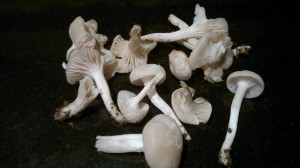
Snowy waxcaps, Cuphophyllus virgineus. Careful identification required as there are some highly toxic lookalikes
Not all waxcaps are edible (though none are known to be dangerously poisonous) and those that are don’t quite manage a place at the top edible mushroom table. The very waxiness that earns them their name, combined with a tendency towards sliminess in wet weather isn’t the most appealing combination.
Waxcaps are under ever increasing environmental pressure as their natural grassland habitats are destroyed by chemical fertilisers. I find it quite irritating when ‘pub conservationists’ train their fire on foragers while ignoring insensitive farming practices that have destroyed countless hectares of natural habitat and with it more fungi, and quite probably species, than an army of foragers could ever disturb. Such is the depletion of natural pasture in the UK, the best place to find wax caps is often on regularly mowed lawns – which rather cocks a snook at unevidenced look-but-don’t touch attitudes to fungi conservation!
Nevertheless, for culinary and conservation reasons, I advocate eating only three species in any quantity: meadow waxcaps (Cuphophyllus pratensis, though many textbooks still list them as hygrocybe pratensis), crimson waxcaps (h. punicea) and snowy wax caps (Cuphophyllus virgineus). Do be careful if you want to pick snowy waxcaps – although they are very common, they are quite similar to a few very poisonous small, white clitocybe species – notably fool’s funnel (c.rivulosa) and c.dealbata (no common name). Scarlet hood (h. coccinea) are also reasonably tasty, but seem to me to be too scarce for anything but occasional tasters when a glut appears.
Waxcap’s bright colours and tendency to grow on neat lawns (stately home grounds are great hunting grounds) mean I have regularly been asked to ‘detoxify’ gardens of such perilous fungi by gardeners of suburban persuasions. Clearly it would be unkind of me not to remove the offending articles to my kitchen, and I never charge for my services…
Meadow waxcaps (Cuphophyllus pratensis – also sometimes called buffcaps) have apricot to brownish-orange coloured domed (though occasionally upturned) caps (3-10cm) with paler stipes. Though waxy, they are only slimy in wet weather and the flesh is solid and white. In common with all wax caps, gills are widely spaced, some partial and some descending down the stem (decurrent). Their gestalt is surprisingly solid and weighty for their initial delicate, grass-nestling appearance and you will soon be able to harvest a nice plateful where they are fully grown.
Crimson waxcaps (h. punicea) start off as domed, deep crimson buttons (2-3cm) but the greasy caps gradually fade through red to muddy orange as they open out (up to 10cm). Gills are yellow, stipe, fibrous, yellow, streaked with red and paling to white at the pointed base. If it seems quite small and lacks a white end to the stipe, you may well have a scarlet hood.
Where you do come across a flush of waxcaps (and you may well do this in towns and cities as well as the countryside) please enjoy these orchids of the mushroom world with restraint and without prejudice by taking some home to try if they are mature and thriving (they may very well be mowed the next day anyway!)
Should you come across waxcaps in unimproved meadows, please tread carefully! Some species are on the verge of extinction and are protected – to the extent where they even have their own excellent website – click here.
It is probably fortunate that waxcaps aren’t the tastiest of mushrooms, but they can make a decent and colourful addition to any mushroom dish. I have enjoyed them flambeed in calvados with hedgehog mushrooms and paprika, quickly sauteed and mixed (colours intact) through couscous and pilafs. They also pickle well and their slippery texture works well preserved in oil.
When you see wax caps, also look out for hedgehog mushrooms, winter chanterelles, blewits, rosehips, sloes, sea radish,hairy bitercress, shellfish, yarow, sea kale, wood sorrel, watercress.
Here are some of the most charismatic members of these beautiful mushrooms.
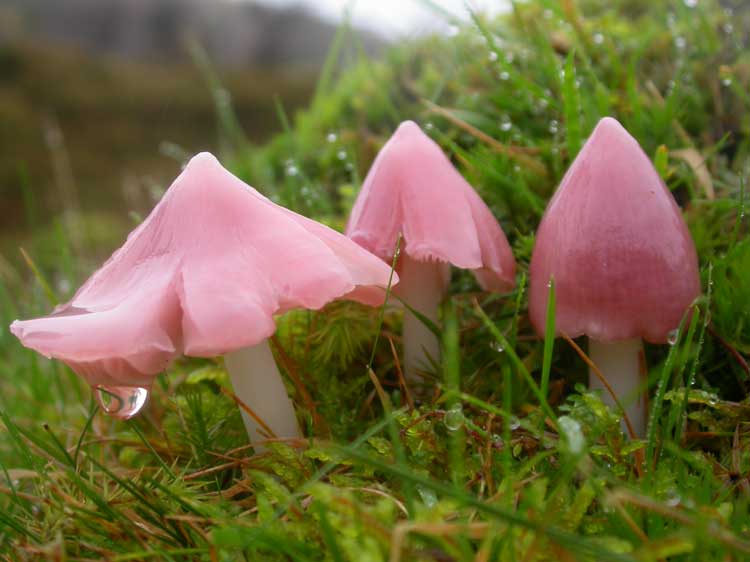
Pink or Ballerina wax caps, Hygrocybe calyptriformis – one of the rarer UK fungi. Image © Ray Woods/Plantlife

Scarlet hood – This picture was taken in the US, where waxcaps tend to grow in woodland rather than grassland. Nobody really knows why, but there is a suggestion that it is to do with ambient soil temperatures.
Related pages:
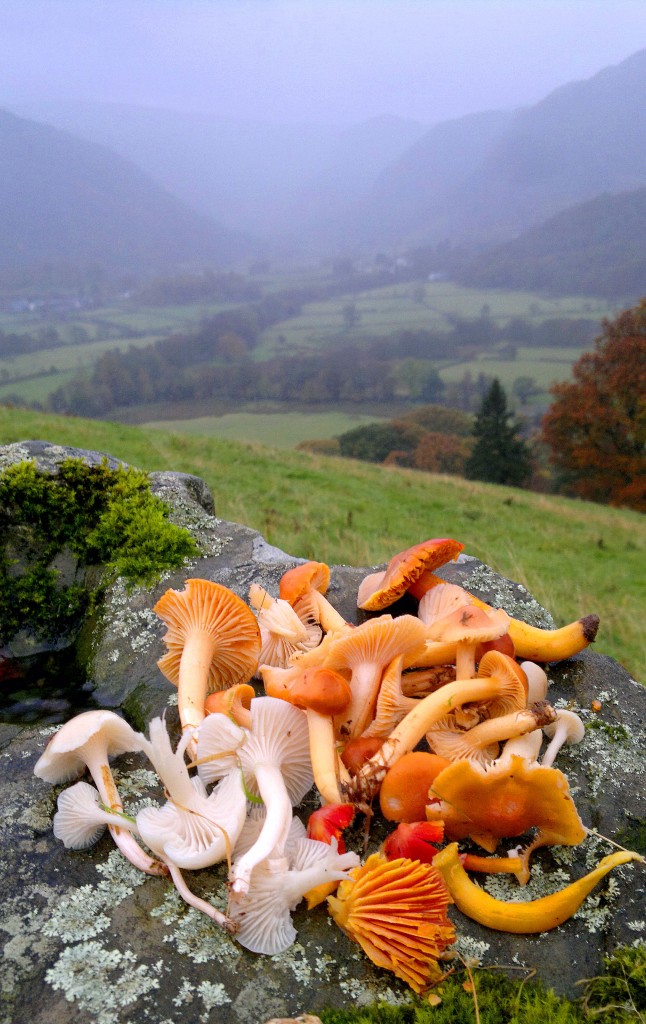
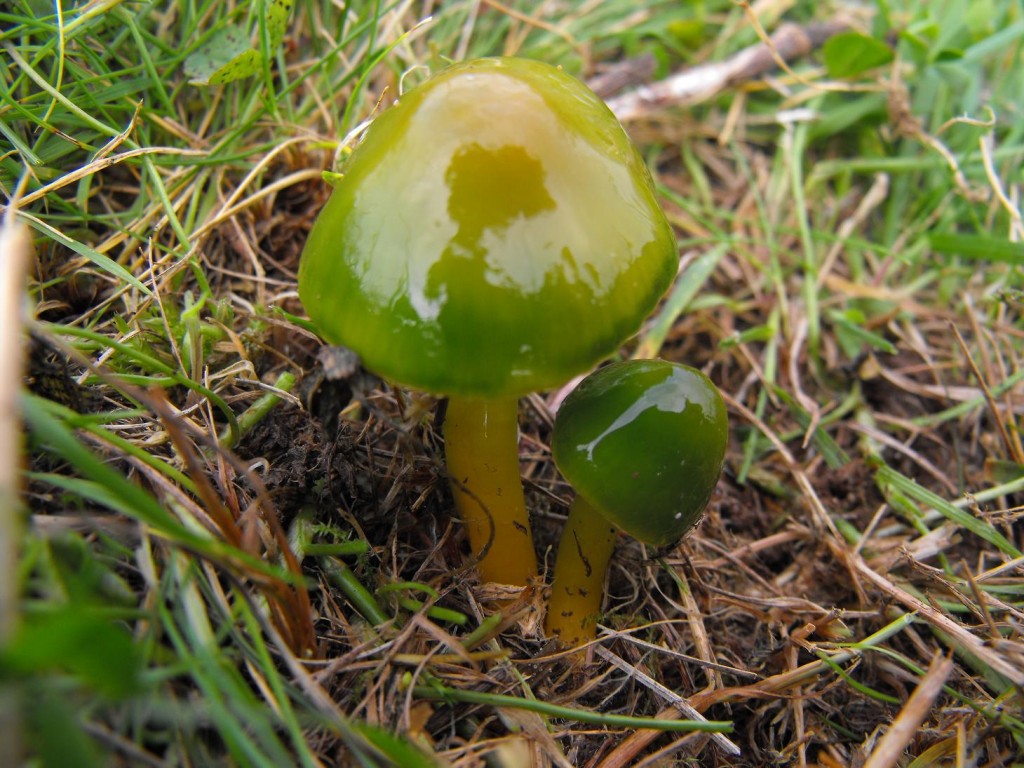
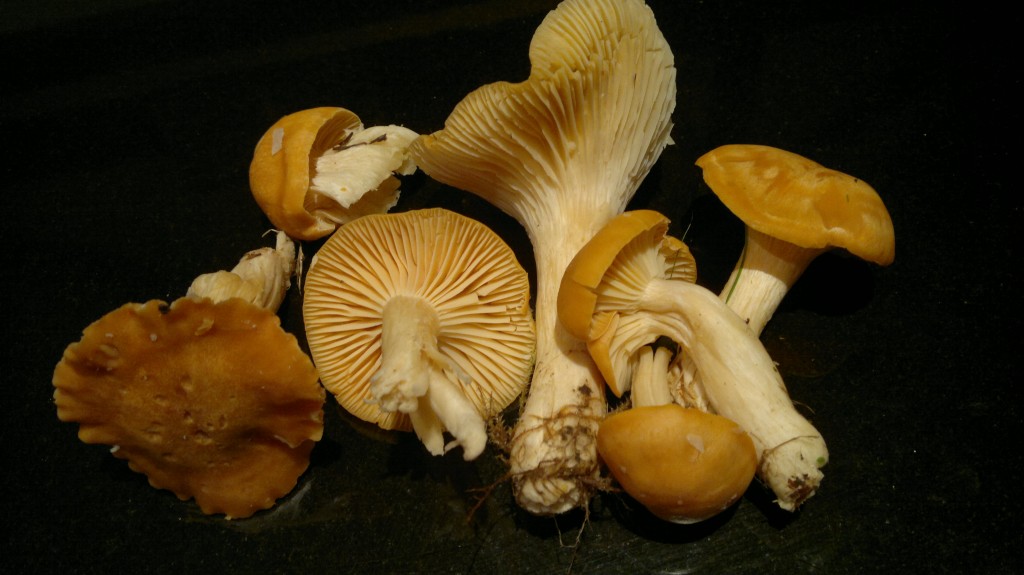
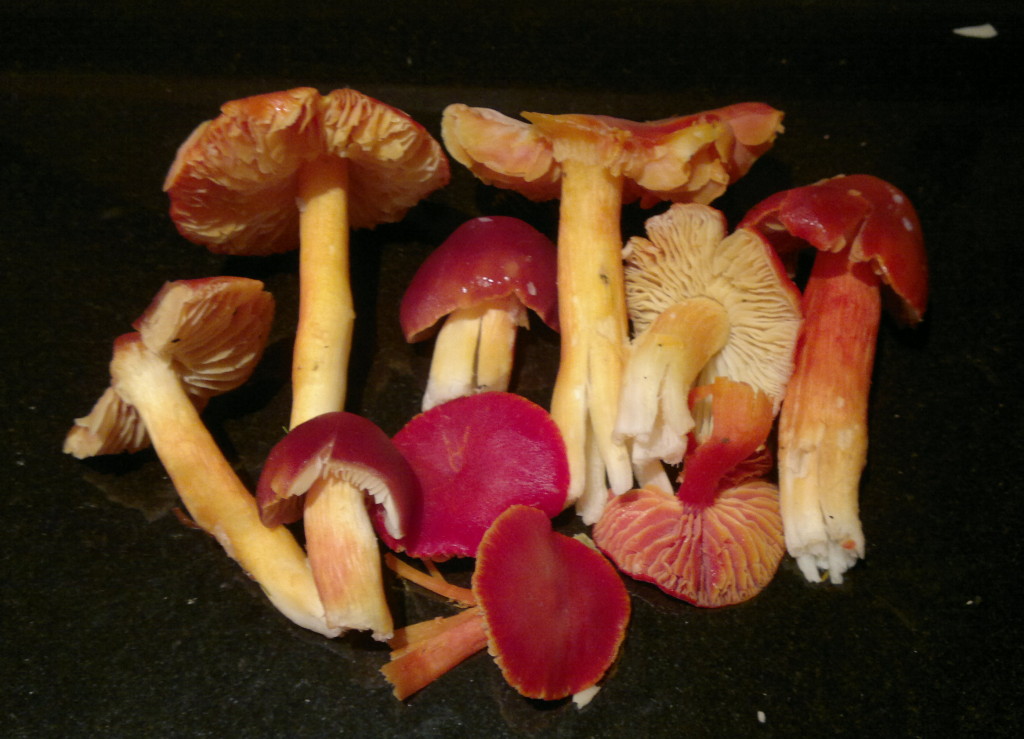
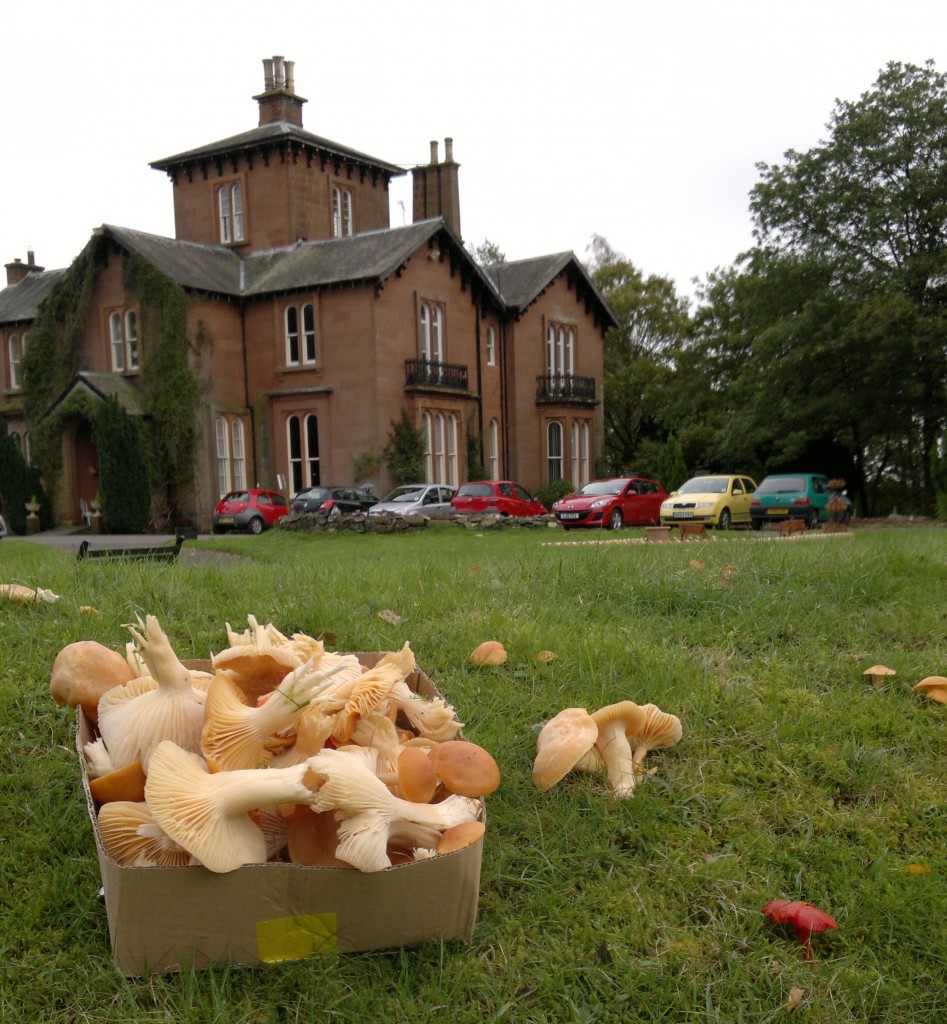
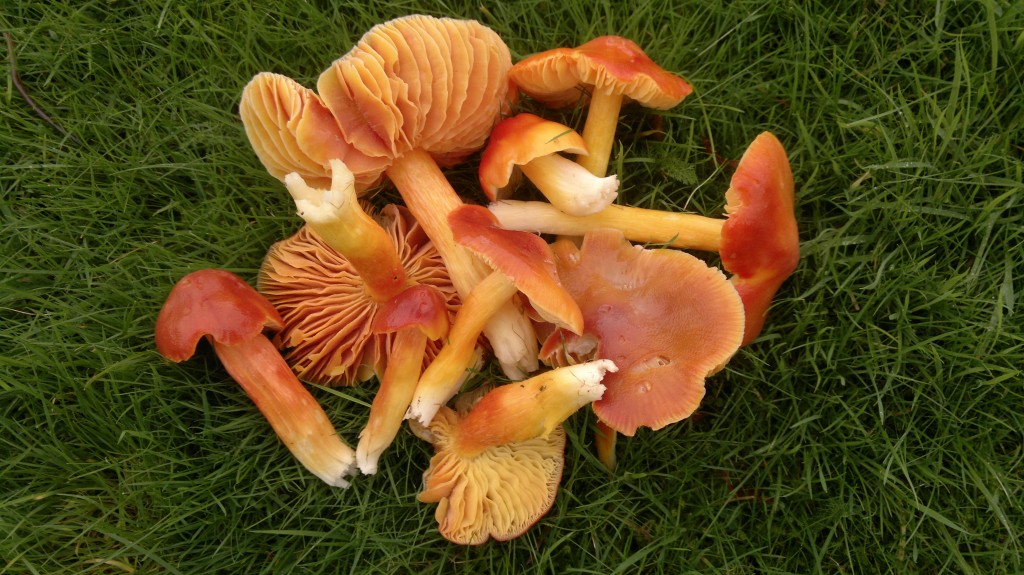
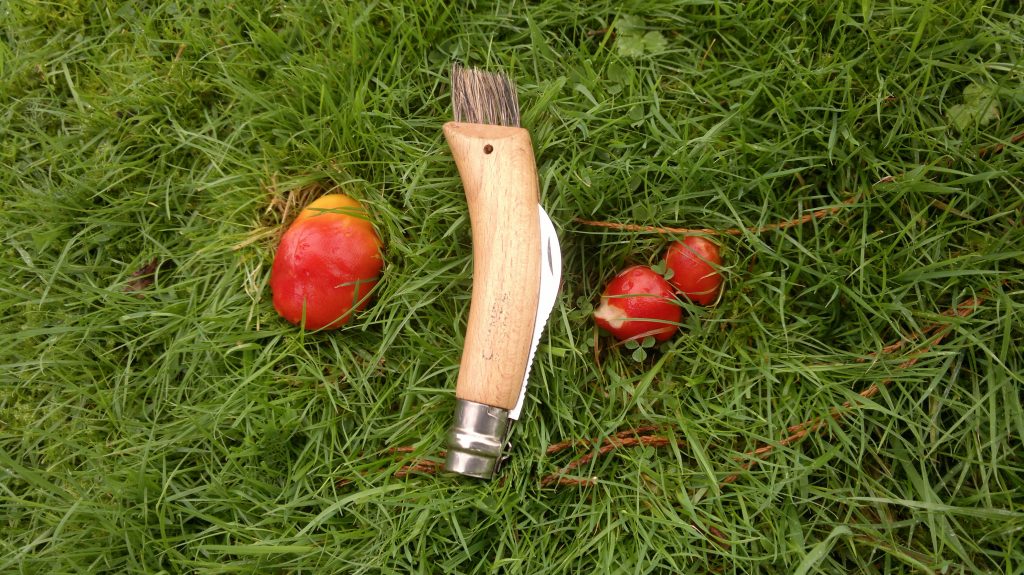
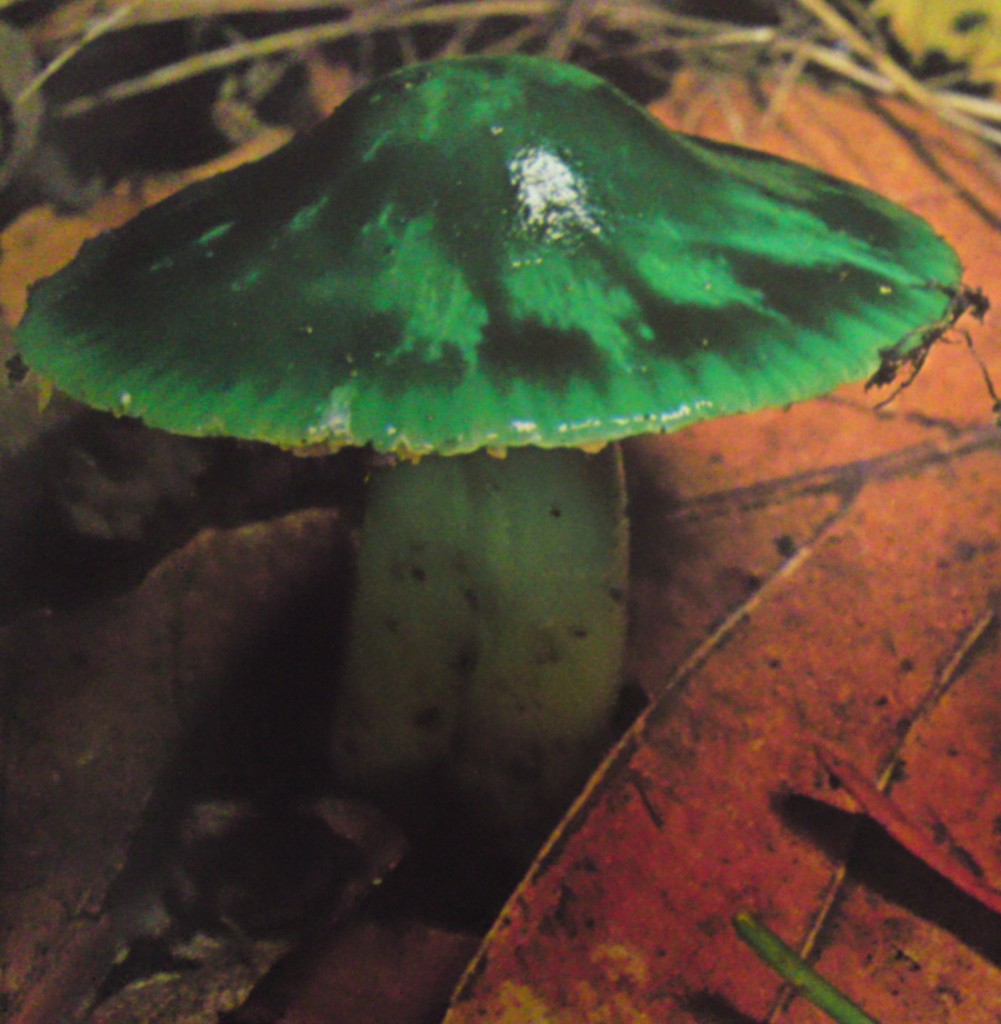
9 Comments
Hi there I never really pay much attention to wax caps although I think I might have eaten them in a mix mushroom dish. I have a few favourite that comes up in my garden every year as my garden has been free of artificial fertiliser and weed killer for 30 years, to name a few maitake, the tall shaggy parasols and wood blewit.
I find the comment regarding `pub conservationist’unfair in regards to the regular mowed lawn scenario. Let’s not forget that the fruiting bodies and spores are in effect left in situ, spread throughout that suitable habitat, and when raked, are normaly left again very close to site. This is a huge comparison to entire fruiting bodies and their spores being collected and removed from their habitat. There are are responsible foragers, and there are those which strip clean sites. This greatly reduces or even removes (when immature fungi are collected) the ability for Fungi to rejuvenate mycelium and sexual reproduce with new genetic material from neighboring Hygrocybe, thus strengthening and invigorating mycelium. There shouldn’t be a war of words between ethical foraging and conservation, that should be kept for those that plunder sites.
In general I agree, but a few points:
– All food has an impact on nature, foraged food considerably less than most
– Many self proclaimed nature lovers lecture foragers, while eating food the environmental impact of which is conveniently masked/ignored
– I suspect most fungi, given the choice, would wish to have their reproductive parts moved around to allow maximum spore dispersal
– A lot of people talk about this “plundering” and “stripping sites clean”. In 35 years foraging, i’ve never seen any evidence of this. Nor have any of the 150 members of the Association of Foragers. A straw dog perhaps? Tabloid drivel? Any actual evidence is welcome.
– Even if that did happen, wax caps are not of interest to commercial foragers
– More on all of this here:
https://gallowaywildfoods.com/foraging-in-the-modern-world-dont-eat-nature/
I would offer as evidence of site stripping the photos of chanterelles taken by a local (Santa Barbara, California) merchant and his statements that they took everything they could find. His photos showed a few specimens that had probably sporulated, but most of the mushrooms taken were small buttons. I would offer as evidence of site stripping and ecological destruction the comments by a local gardener who said that his fellows had been in the hills the previous week, blowing away the oak duff with leaf blowers to find chanterelles. Finally, I have frequented several sites over the years, but have more recently come to find some of them dug up and bereft of fungi.
As foraging and particularly mushrooming become more popular, I expect the problem to become worse. My practice is to follow Arora’s advice and harvest only a quarter of what I find.
Sorry to hear of these bad practices. While foraging is chiefly a powerful tool of reconnection, it often does not sit well with poorly considered commercial operations, and requires a commensurate foraging culture to develop. Here are some posts in which I further explore these issues:
Foraging in the Modern World – a series of articles exploring the impact of foraging:
https://gallowaywildfoods.com/foraging-in-the-modern-world-dont-eat-nature/
Deep Dive into the life cycle of chanterelles, and considered harvesting strategies:
https://gallowaywildfoods.com/chanterelles-sustainable-and-considerate-harvesting/
Discussion of responsible/considerate foraging:
https://gallowaywildfoods.com/conservation/
Discussion of Legal Foraging:
https://gallowaywildfoods.com/foraging-and-the-law/
What about brown rosy gilled waxy caps ? Are they edible ?
What about brown rosy gilled waxy caps ? Are they edible ?
Can you describe the taste of Waxcaps, particularly Crimson Waxcaps? I’m very curious.
TBH they don’t have a lot of flavour, compared to other mushrooms. More of a textural thing, and fun colour. Meadow wax caps are the best eating in this group – with a good nutty, mushroomy flavour when in prime condition. Though still not in the top tier of edible mushrooms imo.